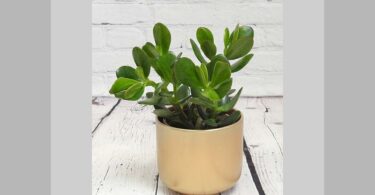This month, our plant doctors Radko Tichavshy, Mark Moodie and Dr. Ahsan Waris weigh in on your plant problems.
Radko Tichavsky is a Czech born Mexican Agrohomeopath. He is the former director of Instituto Comenius at Mexico, author of Handbook of Agrohomeopathy, 2007 (Spanish) and Homepathy for Plants, 2009 (Spanish) and creator and teacher of Holohomeopathy. www.icomenius.edu.mx El 04/12/2014, a las 15:36, Radko Tichavsky [email protected] escribió
Your questions are answered below, but first Mark Moodie has a message about how to approach plant problems:
Mark Moodie: Agrohomeopaths would do well to approach problems in our farms and garden from at least two directions. The first is comparing our situation with precedents, and copying what has worked in the past when others have had a similar problem. The second is understanding why the problem has become manifest and using that insight to address the problem.
Initially we may learn by imitation and by adopting dogmas from teachers and friends, but we really grow up when we understand why something is done so that we can be creative and forge our own answers. I assume that we are all in different stages along this continuum, working with a mixture of assumption and insight, experience and hope.
Although a lot of my work has been to make it possible to imitate others through the material medica and repertory at www.considera.org my main interest is to squeeze our common discipline towards understanding and away from unquestioning repetition so that we can be increasingly effective, even when faced with new situations.
In practice these two approaches are bridged and mediated into one if and when we have a full picture of the situation. What does one need to know to make a valid diagnosis? One prescriber will may feel confident just knowing the pathologist’s title for the complaint. For that person as soon as s/he hears there are, for example, slugs, the prescription ‘helix tosta’ will leap to mind. Job, sometimes, done. Another prescriber may want to know more: what is the plant that is troubled by slugs and what has been the weather in the last days, and is this a problem for the region or just this garden? Is this slug-infested plant the only host for the slugs? What is the soil like? In what continent are these plants? Are they raised on soluble fertiliser or humus? What other issues are manifest? If one puts this into the language of the Organon we are asking to appreciate the totality of the symptoms.
It is my experience that we are sometimes fortunate to select an effective remedy just knowing the single symptom – ie slug – but I assume we will increase our success rate when we have that bigger picture and can orientate ourselves within that fuller totality. This helps us chose the best remedy but it also guides us to address the underlying problem in other ways if they are ore effective: it may be a soil amendment or a change in irrigation practice and so forth. Knowing when not to prescribe a remedy is a good tool in the bag.
Agrohomeopathy is a very young discipline. It is a tiny little baby, nursed by a few unfunded boffins. Although it has had great successes and shows greater potential, there are differing opinions about how this baby should be raised. Amongst the passionate debates, most agree that you can’t argue with evidence. It is a neutral arbiter. If something is tried and is found to be effective the debate falls into secondary importance. That is why I keep asking for stories of what has been found effective.
At the moment the materiamedica – www.considera.org/matmed – is more complete than the repertory – www.considera.org/rep. Both are designed so that everyone can consult them and add to them for free. Anyone can add their experiences on-line or by post. It is also the first place to try if you have a question.
Of course, if the material medica isn’t forthcoming, ask.
Applying the remedies:
Kavi suggested this: “When I refer to treating plants with homeopathic remedies, this is the standard dosing procedure: Put 20 drops of a 6X potency in a litre of water. Succuss the bottle 50 times. Put this litre in the watering can, fill it up with 19 litres of tap water and stir. If the watering can is smaller, the amount of remedy put in must be proportionally smaller. Thus a 10 litre can needs only ½ litre and just 10 drops of the remedy. Apply the contents of the watering can to the roots of the plants to be treated.”
Christiane Mautehas used remedies on pillules and says this in her book “Homeopathy for plants”: for your garden: Crush 6-8 globules in 150 ml or water using a plastic or wooden spoon. This mixture will be divided into 3 parts and used to make 30l of “medicinal water” in all.” (The three parts are because 10 litres is enough to carry but you can add the 150 ml to the 30 litres in one go.)
Mark Moodie says: try the above. As agrohomeopathy is so young please do take these as no more than initial suggestions. In biodynamics we make a distinction between remedies that irrigate a plant and those that are sprayed in the air. Kavi often said you don’t take a shower in the remedy, you drink it and because a plant drinks through its roots that’s why you apply in there. But the stoma on the underside of the leaves are also paths into the plant so I would argue with Kavi. There you have it – a difference of opinion. Perhaps frustrating but I hope you will sigh and take it as a permission to experiment – AND REPORT BACK! (Thanks)
Dear Plant Doctor,
For the last three months I am using only Homeopathic medicines for my Pomegranate farm. Because of the continuous rains, Bacterial Blight attacked some plants and SILICEA 6x has been applied. Crawling pests have attacked and SULPHUR 200c has been applied for this. Termites have attacked and I have given CAMPHOR 30c. Now I have a problem with the THRIPS (a black winged insect that sucks plant sap) and also a Caterpillar type insect. For THRIPS I have applied ACONITE 200c twice but not satisfied with the result completely. Please suggest a remedy?
Thank you
Ravi Varma – India
Radko Tichavsky : Ficus carica 6 CH alternated with Musa paradisiaca 6 CH
Chenoponium 30 CH
Mark Moodie :
Hello Ravi
Did you get results that satisfied you with the blight, crawling pests and termites?
Thrips: put that into the search box at Considera ) you get the following.
| Aconite | Aconitum Napellus |
| All-c. | Allium Cepa |
| Am-c. | Ammonium Carbonicum |
| Belladonna | Belladonna |
| Calcarea | CalcareaCarbonica |
| Kali-s. | Kali Sulphuricum |
| Nat-p. | NatrumPhosphoricum |
| Nat-s. | NatrumSulphuricum |
| Phosphorus | Phosphorus |
| Valer. | Valeriana |
| Sat | SatureiaHortensis |
| BiP – C2 | Biplantol contra x2 |
| Sim – Amb | Amblyseius |
You have tried Aconite without success. Perhaps read through the other options listed above and follow the links through to read the details of others’ experience and see if any are more likely to assist you. Please let us know how you get on.
Dr. Ahsan Waris:
You can Use ANTIMONIUM TARTARICUM. 1M & STAPHYSAGRIA 1M for this problem.
Hi Plant Doctor,
My terrace garden seems to be invaded by snails, the conical shell type, of all sizes. I have followed advice from friends like salt, beer in a cup near the plants etc. Could you suggest a remedy?
Thank you
Bradley – U.S.A.
Radko Tichavsky : Remedies: Helix tosta 100 CH one application, then Sambucus nigra 6 CH alternated with Artemisia vulgaris 6 CH
Mark Moodie:
Hi Bradley
I think that the introduction to this month’s column could have been written for you. You have given us a single symptom (snails) but we don’t know where you live and what soil you have and whether this is the only issue in the garden and if the terraces are terraced houses or terraces on a hill with lots of places for snails to live in the walls of the terraces … I’m not criticizing but write this to let you know that I can only prescribe from precedent with very few clues. That said, look up helix tosta and if it seems right spray as instructed above. Let us know how you get on please.
Dr. Ahsan Waris:
You can Use ANTIMONIUM TARTARICUM. 1M & SILICEA 1M with irrigation twice a week.
Dear Sir,
Our crop of green peppers was mostly destroyed by Aphids this year. Is there anything we can do next year to prevent that?
Thank you
John Addington – UK
Radko Tichavsky : Agriculltural tips: Increase content of bioavailable calcium in soil. Reduce nitrogen contribution in soil. Preventive applications of aphids’ nosode 6 CH at beginning of biological cycle.
Principal remedies: Ocimum basilicum 6 CH / Camphor 6 CH
Complementary remedies:
Citrus limon 6 CH
Cina 6 CH
Rosmarinus officinalis 6 CH
Mark Moodie:
Hi John
Put aphids into and see what comes up. Lots of remedies right! Pick a likely candidate and let us know how you get on. You say that the aphids destroyed your crop this year which suggests that this didn’t happen in previous years. What is the difference between this and previous years? Did you try soft soaps or sugar sprays?
Dr. Ahsan Waris:
You can Use RHUS TOX. 1M & MEZERUM 1M to control the Aphid in Next Year.
Hi Plant Doctor,
We have scale insects on several of our trees which secrete a hard covering. The leaves have become yellowed and the trees are not growing properly. Is there a non- toxic way to solve this?
Sincerely
Elizabeth Curtis – Northern U.S.A.
Radko Tichavsky: Agricultural tips: Reduce water coming in.
Principal remedy: Cuprum metallicum 100 CH
Complementary remedies:
Adiantum capillus-veneris 6 CH
Polypodium vulgare 6 CH
Selaginella lephidophyla 6 CH
Mark Moodie:
Hello Elizabeth
It sounds like you have a stressed plant. Has anything changed recently to bring about that stress? Drought, soil excavations for nearby buildings? Put ‘scale’ into and you get a small list. Thuja may be worth trying. Kaviraj wrote: “Thuja, … is a remedy that can neutralise “animal poisons” such as vaccination and its negative effects in humans. Thus many insects that attack plants and trees will respond to this remedy especially if disease is the result of pest attack…”
Dr. Ahsan Waris:
You can Use ANTIMONIUM TARTARICUM. 1M & RADIUM BROM1M to control the Scale insect.
Dear plant doctor,
We had 100 Cricket Ball variety of Chikoo trees which were fruiting every year. Unfortunately in the month of April this year they were burnt from a fire. I had put water as suggested by experts in govt. agriculture, but the trees are still not back. The altitude is 1033above sea level. Weather is 48-11degrees around the year, soil type is red yellow alluvial. What should I do?
Thank you.
Shweta das -India
Radko Tichavsky : Remedies: Staphysagria 100 CH one application
Carbo vegetabilis 30 CH one application
Arnica montana 6 CH repeated application
Mark Moodie: How bad was the fire? I assume there is the possibility of bringing them back to life. On that assumption you could try the ‘corpse reviver’ – carbo veg or others that come up when you put ‘fire’ into the search box at
Dr. Ahsan Waris:
You can use Radium Brom 200& carbo Veg for this purpose.
Dear Plant Doctor,
My Daphne plant has curling leaves, which lose elasticity and drop. New buds are becoming black. I have sprayed it with Calc Phosphorus 30c, but that has not helped. It is in a large pot. I do not think it is over or under watered.
Thank you
Jean
Radko Tichavsky Principal remedy: Arsenicum album 100 CH one aplication
Complementary remedies:
Aloe vera 6 CH
Lepidium virginicum 6 CH
Capsela bursa pastoris 6 CH
Mark Moodie:
Hi Jean
You could put ‘curl’ in the search box. Thuja has this symptom as does Silicea. If you chose Silicea click the number after the rubric. So click next to “Effect on plants” on the silicea page and under “clinical description” you find “Curly Leaf (468)” and 468 is a link to the source of that information – in this case another online discussion. Then you can read if the situation is similar to yours or similar enough to want to try Silicea on your Daphne.
Dr. Ahsan Waris:
You can use MEZERUM 200& CALCIUM FLOUR 200 for this Problem.
Dear Sir,
My potato and tomato plants were attacked by mosaic virus. The plants had wrinkled leaves, yellow spots and the crops did not grow well. How can we stop this or treat it in the future?
Regards,
Hans Meier – Germany
Radko Tichavsky : Agricultural tips: Work only with virus free seeds and seedlings.
Do not allow anyone who smokes to be in contact with crops.
Principal remedy: Aesculus hippocastanum 6 CH
Complementary remedies:
Ruta graveolens 6 CH
Podophyllum 6 CH
Ocimum basilicum 6 CH
Helianthus anuus 6 CH
Viola tricolor 30 CH
Achillea millenfolium 6 CH
Mark Moodie:
Hi Hans
Try Natrum Salicylicum
Dr. Ahsan Waris:
You can Use ANTIMONIUM TARTARICUM. 1M & THUJA OCC. 1M for this problem.
SEND YOUR QUESTIONS TO : [email protected]
Please include a the country you live in, the climate and any other details that might help our Plant Doctors find the remedy. Also, if possible, send a photo of the plant.





Many many thanks sir,
As per your suggestions in the last issue I treated my rose plant and now it is showing signs of improvement
As I am not versed with plant diseases may I suggest to contain every answer in short the name of disease and pathology. If in addition colour atlas of the problem of plant is added it will make the things easy.
Thank you all again.
Ravindra Awasarkar
Thank you Plant Doctors! Thank you for shairing this special knowledge. This is a wonderful column and a one of its kind. I hope one day agro homeopathy will replace chemical agriculture before the planet is ruined by pesticides and herbicides.
Is there any homeo plant tonic for the plants in pots
Dear Docs,
You mentioned “Use RHUS TOX. 1M & MEZERUM 1M to control the Aphid”
Can this be used for preventing/controlling aphids on brassicas like kale and oriental Mustard greens? What is the dosage and frequency?
Thanks,
Amrita .